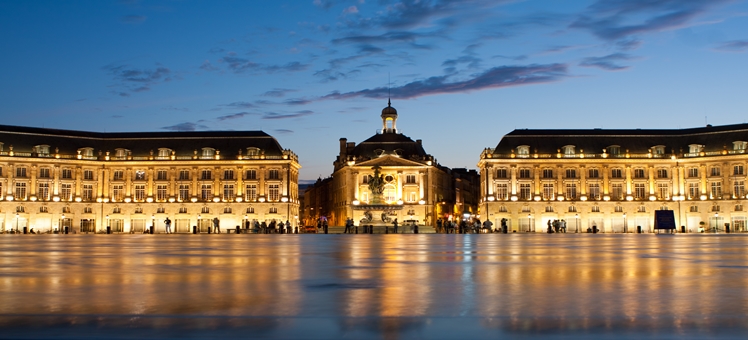
Once a rather grubby urban sprawl, Bordeaux has cleaned up its act – years of grime has been stripped from its historic buildings, revealing a sparkling grandeur which is deserving of its UNESCO World Heritage title. Meanwhile, the previously downtrodden docklands have been given a new zest of life with art galleries and independent, creative shops springing up in the old warehouses. Fortunately, there is a speedy tram system to shuttle you around these distinct districts.
Quai RichelieuThe Pont de Pierre is one of the key landmarks, and a good place to become acquainted with Bordeaux. It is the main bridge in the city, built of stone and lined with elegant lampposts. Walk across or take the tram. Count the arches; there are 17, one for each letter in Napoleon Bonaparte’s name. Just a little further down the Left Bank of the Garonne is the photogenic Place de la Bourse, a sumptuous renaissance palace built for Louis XV. At regular intervals each hour, the plaza in front of the palace is sprayed with a sheen of water, becoming a giant mirror.
Saint Andre Cathedral
A wander through the streets of the pedestrian quarter is a must for any historian – the buildings range from old stone medieval structures to regimented Belle Époque facades. Emerge at the St Andre Cathedral, the center point of the Old Town. Its spires rise dramatically into the sky, and the whole building is an impressive collection of eras and styles, from the gothic to the enlightened. It has been in continuous use for over a thousand years and is a stopping point for many on the Camino de Santiago. Inside, beneath the high vaulted ceilings, there are ancient relics and a creepy, atmospheric crypt.
Modern Art Museums
Chartrons, north of downtown Bordeaux, once a merchants’ district, is now the main area for modern museums and cultural spaces. The Museum of Modern Art, or CAPC, is housed in an old fabrics warehouse and presents varied collections in its cavernous rooms – contemporary sculptures and confrontational work by young artists providing its main raison d’être. Also worth a visit is the Wine Museum, in what were once the cellars of a wine merchant. The musky aroma of wine will enliven your senses while you explore interesting old artifacts clustered among dusty barrels, so you will be ready for the wine tasting at the end.
Wine tasting and vineyard tours
If the Wine Museum in Chartrons whets your appetite for Bordeaux’s most famous export, then a trip to a local vineyard will be the perfect day out. Medoc and Saint-Emilion offer some of the most well-known vineyards with celebrated grape varieties – Bordeaux wines made in these areas are exported all over the world. Both destinations are easily reached in under an hour. You can go independently, or arrange a guided tour through the tourist office in Bordeaux. For serious wine connoisseurs, it’s possible to attend a blending and tasting workshop at the Ecole du Vin in Bordeaux before your trip.